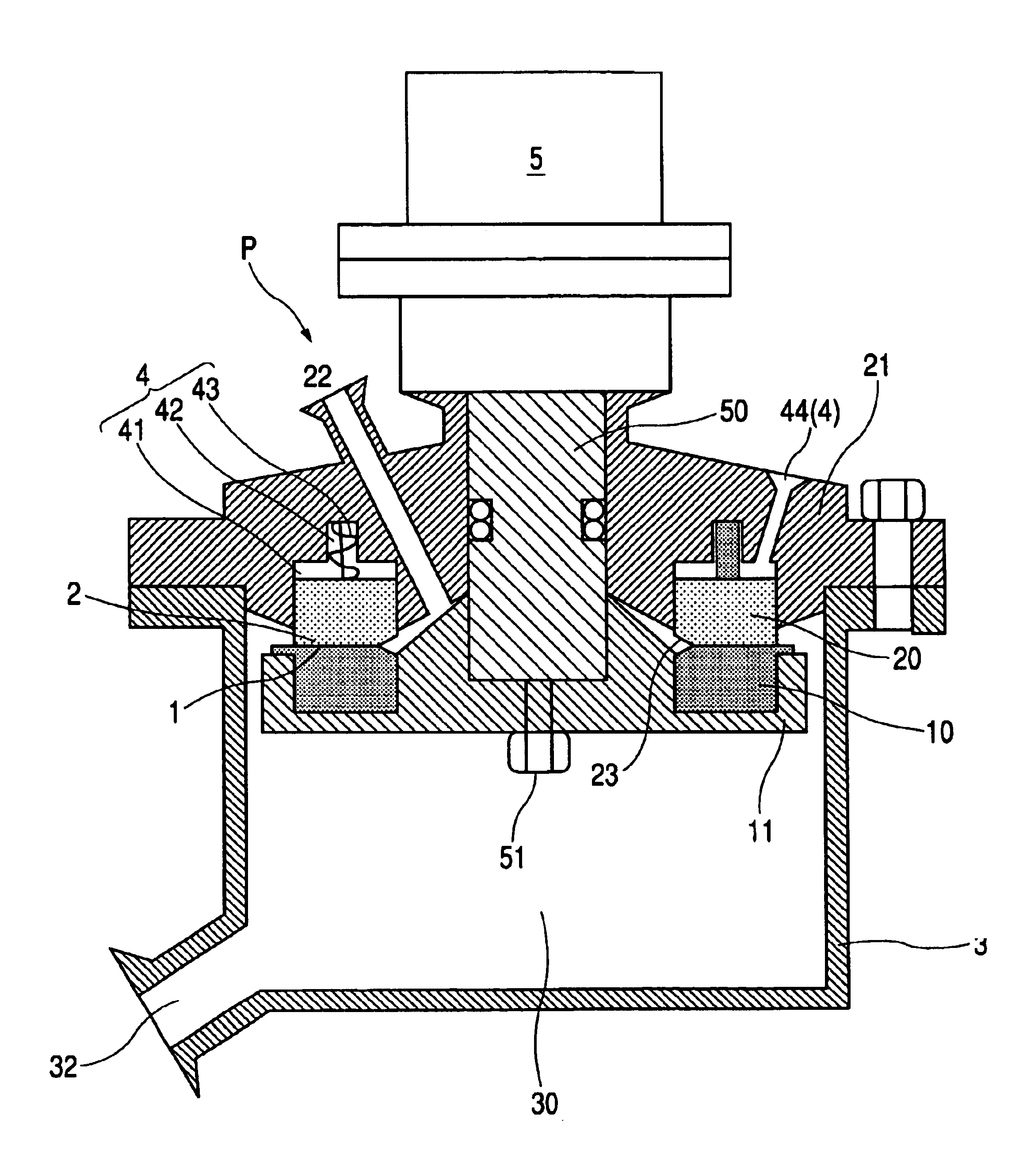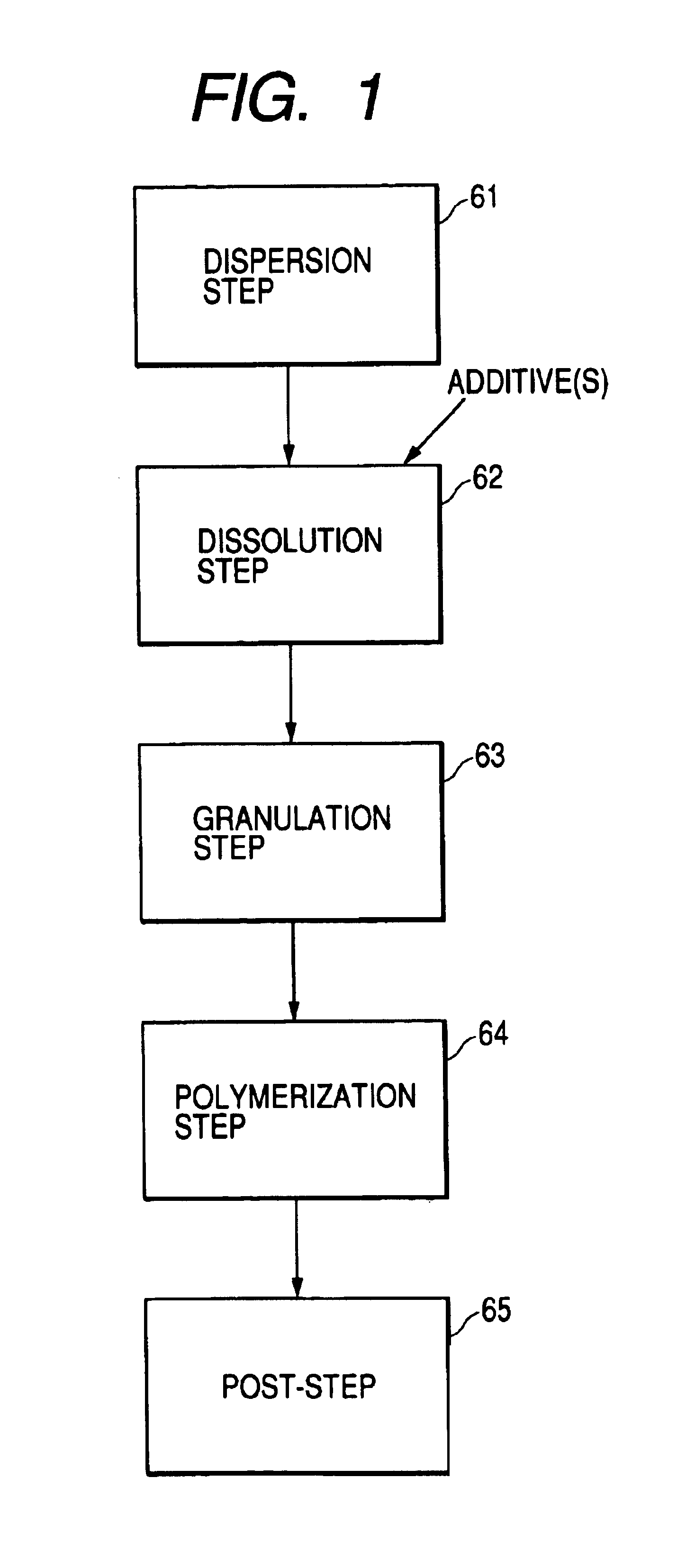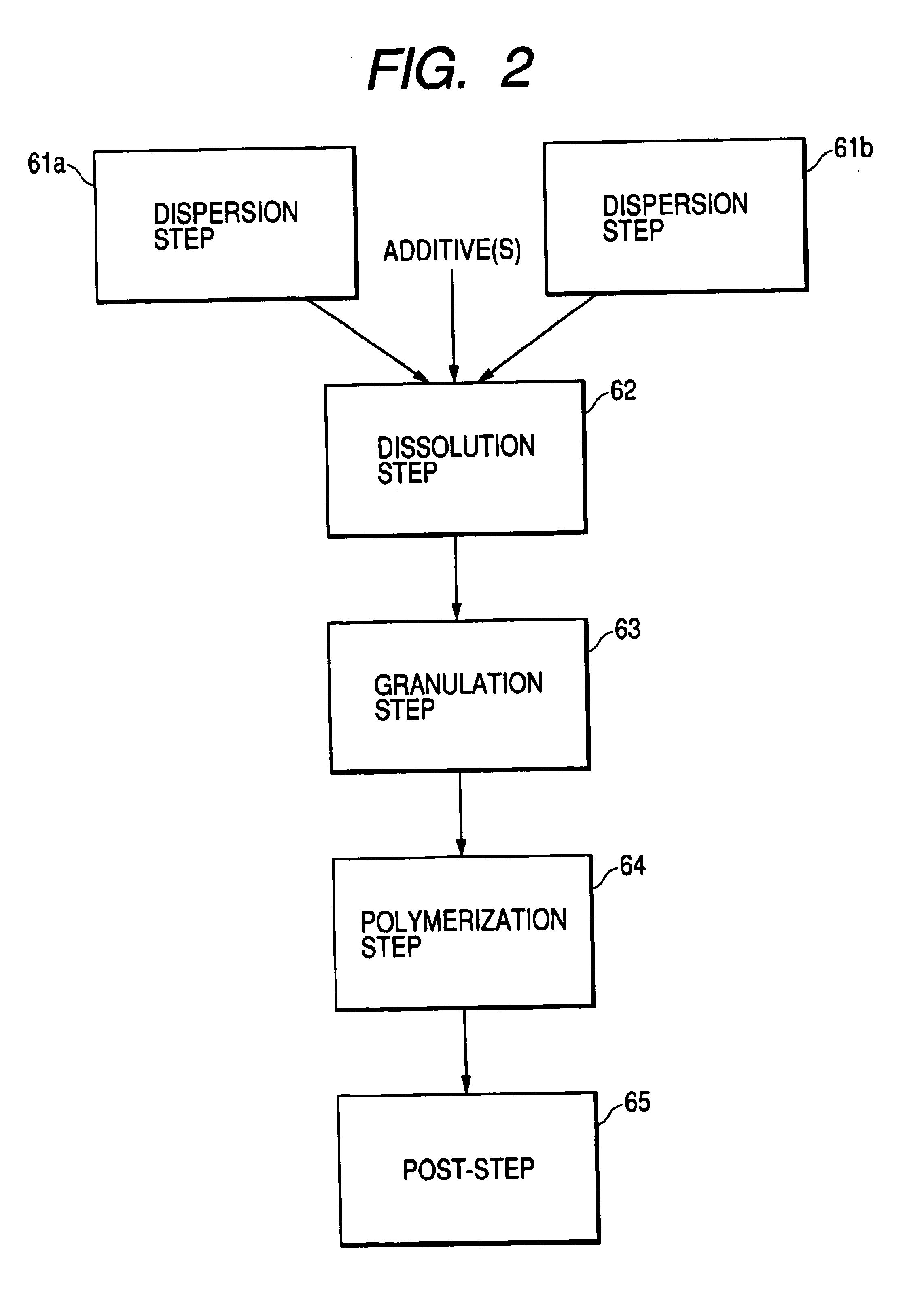Process for producing toner particles
a technology of toner particles and processing equipment, applied in the field of processing, can solve the problems of limiting the range in which toner materials are selected, fine particles tend to be included in the particles in a relatively large proportion, and the kneaded products must be brittle enough, so as to prevent excess power consumption, reduce the effect of dispersibility and good image density
- Summary
- Abstract
- Description
- Claims
- Application Information
AI Technical Summary
Benefits of technology
Problems solved by technology
Method used
Image
Examples
example 1
[0204]The apparatus shown in FIGS. 5 and 6 (diameter of the first treatment ring 10: 100 mm) was used as the fine-dispersion machine in the dispersion step 61 shown in FIG. 1, and the step of dispersing a colorant was carried out.
[0205]First, 60 parts by weight of a styrene monomer, 8 parts by weight of a magenta colorant (C.I. Pigment Red 122) and 1 part by weight of a negative charge control agent (a salicylic-acid aluminum compound E-88, available from Orient Chemical Industries, Ltd.) were put into a container made ready for use, followed by pre-dispersion by means of THREEONE-MOTOR to prepare a first fluid mixture (first polymerizable-monomer fluid mixture).
[0206]Next, the first treatment ring 10 shown in FIGS. 5 and 6 was rotated at a number of revolutions set to 8,000 rpm. Compressed air of 600 kPa was introduced through the air feed port 44 to regulate the surface pressure between the first treatment ring 10 and the second treatment ring 20. Thereafter, the first fluid mixtu...
example 2
[0207]A second fluid mixture (second polymerizable-monomer fluid mixture) in which the colorant stood finely dispersed was obtained in the same manner as in Example 1 except that the number of revolutions of the first treatment ring 10 was set to 10,000 rpm and compressed air of 700 kPa was introduced through the air feed port 44. Here, the electric power of the rotary derive unit 5 was measured to find that it was 2.5 kW. The value of glossiness and volume-average particle diameter of the second polymerizable-monomer fluid mixture obtained were measured to find that they were 48% and 0.07 μm, respectively. This second fluid mixture was prepared instantaneously within few seconds. To prepare this second fluid mixture, a power of 0.21 kWh / kg was necessary per unit weight.
example 3
[0209]The apparatus shown in FIGS. 5 and 6 (diameter of the first treatment ring 10: 100 mm) was used as the fine-dispersion machine in the dispersion step 61a shown in FIG. 2, and the step of dispersing a release agent was carried out.
[0210]First, 30 parts by weight of a styrene monomer, 3.5 parts by weight of a release agent (low-molecular-weight polyethylene wax PW850, available from Toyo Petroleum Co.; melting point: 105° C.) were put into a container made ready for use, followed by pre-dispersion by means of THREEONE-MOTOR to prepare a first fluid mixture (first polymerizable-monomer fluid mixture).
[0211]Next, the first treatment ring 10 shown in FIGS. 5 and 6 was rotated at a number of revolutions set to 8,000 rpm. Compressed air of 600 kPa was introduced through the air feed port 44 to regulate the surface pressure between the first treatment ring 10 and the second treatment ring 20. Thereafter, the first fluid mixture was introduced into the fine-dispersion machine from the ...
PUM
 Login to View More
Login to View More Abstract
Description
Claims
Application Information
 Login to View More
Login to View More - R&D
- Intellectual Property
- Life Sciences
- Materials
- Tech Scout
- Unparalleled Data Quality
- Higher Quality Content
- 60% Fewer Hallucinations
Browse by: Latest US Patents, China's latest patents, Technical Efficacy Thesaurus, Application Domain, Technology Topic, Popular Technical Reports.
© 2025 PatSnap. All rights reserved.Legal|Privacy policy|Modern Slavery Act Transparency Statement|Sitemap|About US| Contact US: help@patsnap.com



